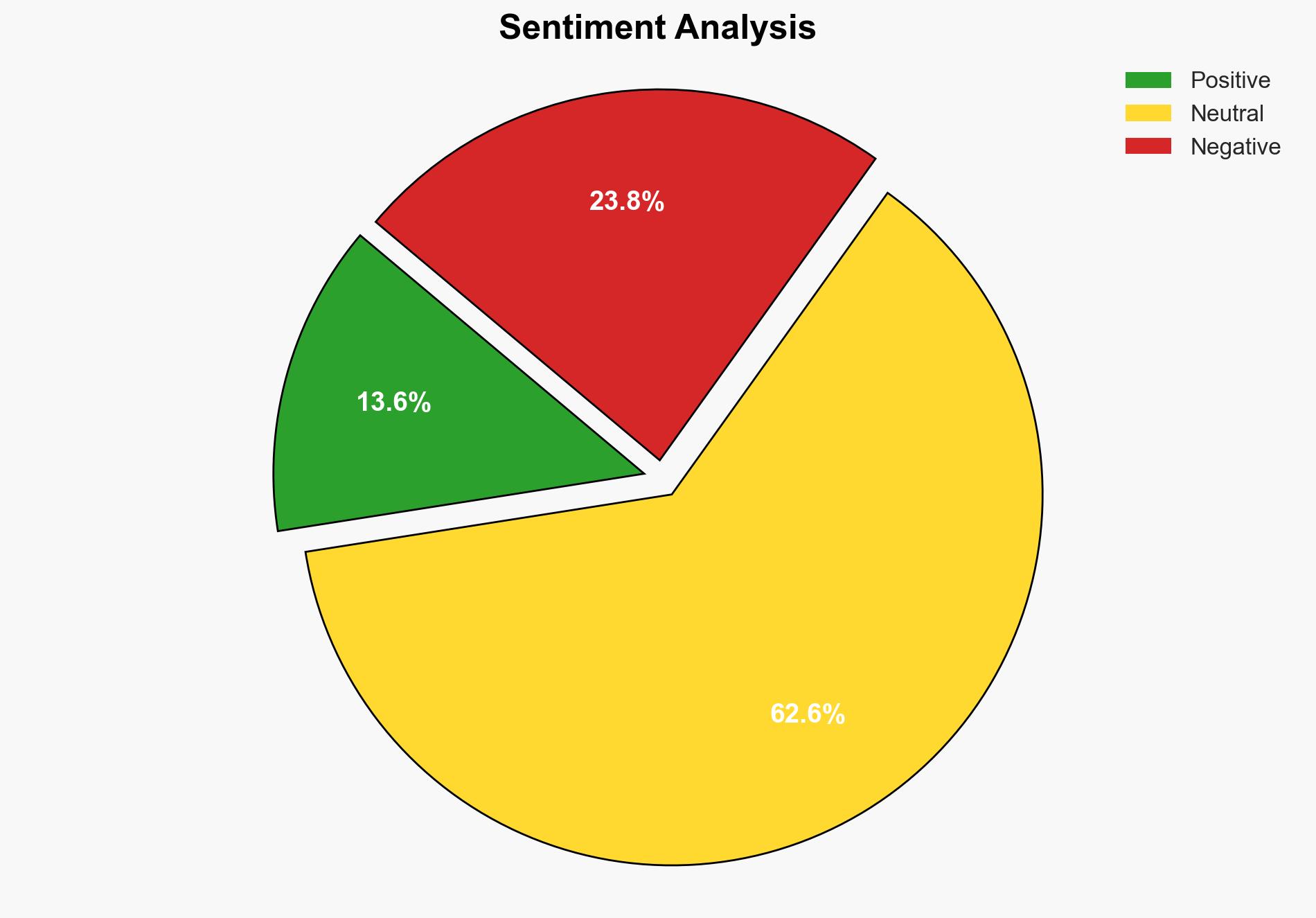Syrian leader scrambles to contain deadliest violence in years – Japan Today
Published on: 2025-03-09
Intelligence Report: Syrian leader scrambles to contain deadliest violence in years – Japan Today
1. BLUF (Bottom Line Up Front)
The recent escalation of violence in Syria marks the deadliest period in years, with significant clashes between loyalists of Bashar al-Assad and the new Islamist rulers. The conflict has resulted in numerous civilian casualties and has the potential to destabilize the region further. The interim leadership under Ahmed Sharaa is attempting to manage the situation by investigating the violence and calling for national unity. The involvement of external actors, including Turkey and Israel, complicates the situation, posing a risk of broader regional conflict.
2. Detailed Analysis
The following structured analytic techniques have been applied for this analysis:
SWOT Analysis
Strengths: The new leadership under Ahmed Sharaa has the potential to unify opposition factions and stabilize the region if successful in mitigating violence.
Weaknesses: The fragmented nature of Syrian factions and external influences from countries like Turkey and Israel undermine cohesive governance.
Opportunities: Establishing a stable interim government could attract international support and aid for rebuilding efforts.
Threats: Continued violence and external interventions could lead to a renewed civil war, further destabilizing the region.
Cross-Impact Matrix
The violence in Syria has potential spillover effects on neighboring countries, particularly Turkey and Israel, which have vested interests in the region. The involvement of Kurdish forces and Turkish-backed factions could escalate tensions, affecting regional security dynamics.
Scenario Generation
Best-Case Scenario: Successful mediation and establishment of a stable interim government lead to decreased violence and increased international support.
Worst-Case Scenario: Escalation into a full-scale civil war with increased foreign intervention, leading to regional instability.
Most Likely Scenario: Continued sporadic violence with intermittent negotiations, resulting in a protracted conflict with limited resolution.
3. Implications and Strategic Risks
The ongoing conflict poses significant risks to national security and regional stability. The potential for increased refugee flows and humanitarian crises could strain neighboring countries and international resources. Economic interests, particularly in the reconstruction and stabilization of Syria, are threatened by continued instability.
4. Recommendations and Outlook
Recommendations:
- Encourage diplomatic engagement with key regional players to mediate the conflict and prevent further escalation.
- Support initiatives aimed at humanitarian aid and rebuilding efforts to stabilize affected regions.
- Monitor external influences and provide intelligence support to mitigate foreign interventions that could exacerbate the conflict.
Outlook:
The situation in Syria remains volatile, with the potential for both escalation and resolution. Continued monitoring and strategic engagement are essential to influence positive outcomes. The most likely scenario involves a prolonged conflict with intermittent negotiations, requiring sustained international attention and intervention.
5. Key Individuals and Entities
The report mentions significant individuals and organizations:
- Bashar al-Assad
- Ahmed Sharaa
- Rami Abdulrahman
- Hayat Tahrir al-Sham





